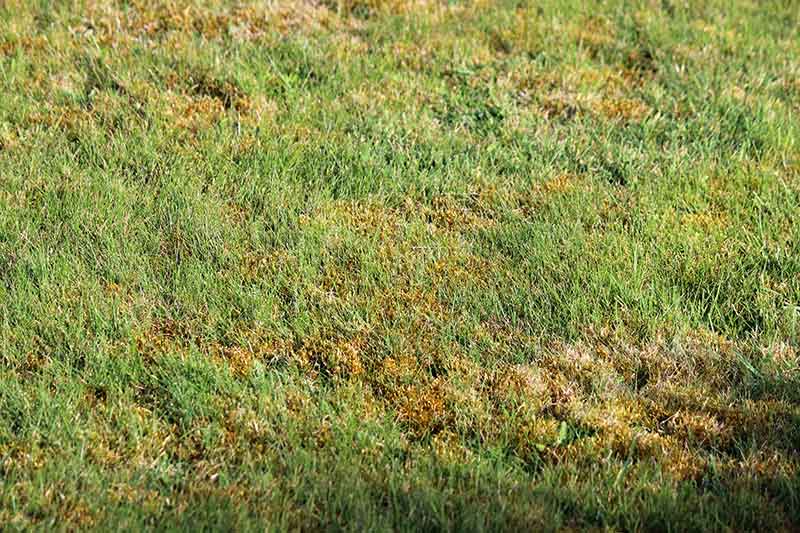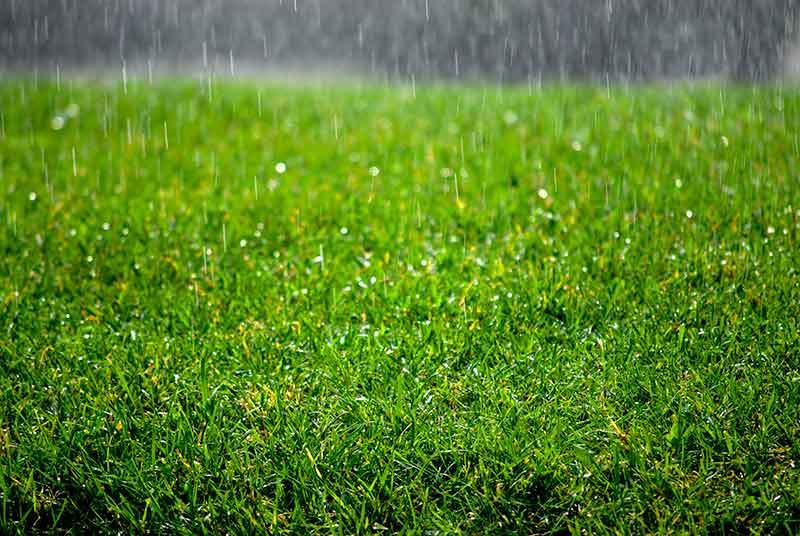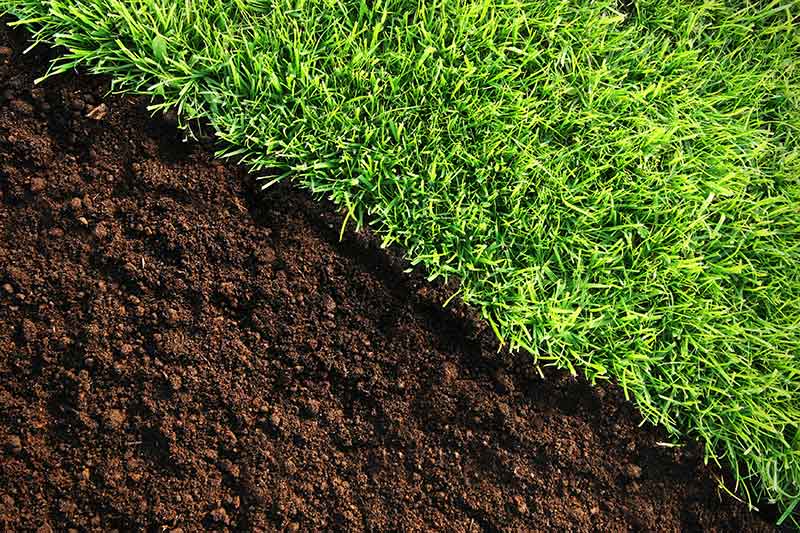Adding Lime To A Pond
In many parts of the land, adding lime to your backyard is as essential as mowing it. Without lime, backyard grasses may be unable to benefit from the nutrients in your soil, including those you add through fertilizers. By agreement how lime helps lawns and why you lot may need lime, yous can help your backyard achieve its full potential. The following questions and answers can aid guide you through that process, then you lot can lime your lawn confidently:
- What is lime?
- Why apply lime?
- How do I know when my lawn needs lime?
- Why is soil testing important?
- Why does soil pH keep changing?
- What's the best time to apply lime?
- How much lime should I utilize, and what'due south the nearly effective mode to utilize it?
one. What is lime?
Lime is a soil amendment made from ground limestone rock, which naturally contains calcium carbonate and magnesium carbonate. When lime is added to soil, these compounds work to increase the soil's pH, making soil less acidic and more alkaline. Even though lime includes calcium and magnesium, which are essential nutrients for healthy constitute growth, it's non a substitute for fertilizer. Lime's master function is to alter soil pH and offset soil acidity, which tin better the availability of plant nutrients.
2. Why apply lime?
Lawns need lime when depression soil pH starts inhibiting the availability of nutrients. Soil pH preferences vary between regional backyard grasses, but virtually grasses adopt soil pH between v.eight and 7.two. Warm-flavor grasses tolerate slightly lower pH, while cool-flavour grasses prefer pH slightly higher.1,two When within preferred pH ranges, the nutrients lawn grasses need near — including added nitrogen from lawn fertilizers — stay available for grass to utilise. When pH strays likewise far in either direction, even plentiful nutrients are restricted. Lime restores balance in overly acidic soil to bring pH back to optimal growing levels.

Poor grass growth and lawn moss are signs that lawns may demand lime.
three. How exercise I know when my lawn needs lime?
When soil becomes too acidic, lawn grasses struggle and plants that flourish in acidic soil have their place. For example, the presence of lawn moss signals your soil pH has become as well depression for strong, salubrious grass growth. Other alarm signs include increases in mutual backyard weeds, diseases and insect pests. Many weeds prefer acidic soil, and low soil pH tin can inhibit the effectiveness of some herbicides and insecticides.ii When soil is overly acidic, you'll also find that grasses don't respond to quality backyard fertilizers with the salubrious, lush growth you normally wait.
4. Why is soil testing important?
Soil testing provides an authentic mensurate of your soil's electric current pH level and other factors, such every bit soil type, that affect the amount of lime or other soil amendments it may need. Without soil samples,y'all can't accurately judge your lawn's needs. Applying lime when information technology'south not needed or applying as well much tin harm lawn grasses instead of help them. If your soil is overly acidic, you should retest every twelvemonth until proper balance is restored.1 Established lawns should be tested every three to four years. Your local county extension agent can assistance with information and testing kits.
v. Why does soil pH keep changing?
Soil pH changes for many reasons, including the lime or other products you add. In areas with heavy rainfall, calcium naturally leaches away as rainwater passes through soil. The loss of calcium ways soil pH drops and soils become acidic over fourth dimension. In these regions, lime is usually a necessity for healthy lawns. In areas with very little rainfall, calcium doesn't leach away, and lawns can become as well alkaline. Proper lawn maintenance besides naturally lowers soil pH over time. Regular fertilization, proper irrigation and increased activity of benign soil microorganisms all contribute to gradual, normal drops in soil pH.2

Lawns in regions with heavy rainfall tend to demand lime regularly.
six. What's the best time to use lime?
Fall and spring are mostly the all-time times to lime lawns. Fall has an added reward, as rain, snow and cycles of freezing and thawing aid lime break down and begin to piece of work. Traditional lime tin can have many months to modify soil pH significantly, but Pennington Fast Acting Lime contains finely basis particles that are bound together in an like shooting fish in a barrel-to-apply, pellet-like class, and begin correcting soil pH immediately. With the added benefit of Avant-garde Soil Engineering science, this high-quality, fast-acting lime maximizes food availability to benefit your lawn whatever the season.
7. How much lime should I employ, and what's the virtually effective way to employ it?
Soil test results will include the amount of lime your lawn needs, based on its soil blazon and current pH. Follow those recommendations closely, as adequate amounts tin can vary significantly for soil types. For instance, clay soil takes much more lime than sandy soil to accomplish the same results.1,2
Pennington Fast Acting Lime can be spread hands — without the backlog grit and mess of some products — using a regular lawn spreader. Water your lawn when finished, so the fast-interim lime can go to work. Plants such as azaleas and blueberries adopt acidic soil, so avoid liming near these acid-loving plants.
By liming your backyard when it's needed, you lot assist ensure your grass gets the nutrients and advantages it needs for lush, healthy, beautiful growth. Pennington and the line of lawn and garden productsPennington are dedicated to helping you requite your lawn the best care possible, and so yous tin can grow and enjoy information technology to the fullest.

Your backyard's soil type affects how much lime it takes to modify soil pH.
E'er read the product label and follow the instructions advisedly. Pennington is a registered trademark of Pennington Seed, Inc.
Fast Acting and Advanced Soil technology are trademarks of Encap, LLC.
Sources:
1. Patton, Aaron, "Liming Your Lawn," University of Arkansas Cooperative Extension Service.
two. Landschoot, Peter J., "Liming Turfgrass Areas," PennState Middle for Turfgrass Scientific discipline.
Adding Lime To A Pond,
Source: https://www.pennington.com/all-products/fertilizer/resources/does-your-lawn-need-lime
Posted by: coatsallyne.blogspot.com


0 Response to "Adding Lime To A Pond"
Post a Comment